a policy brief from ICPH
May 2015
A recent report released by New York City’s Independent Budget Office revealed a surprising statistic: close to one in six families entering shelter between 2002 and 2012 came from city public housing. To date, there has been little discussion regarding the role that the New York City Housing Authority (NYCHA) plays as a feeder to the family shelter system or the steps that could be undertaken to reduce the number of families who become homeless from the city’s public housing. This report examines the complex relationship between city policies and the rising number of families who enter the shelter system from NYCHA housing.
Entering and Exiting Shelter
From 2002 to 2012, 16% of families residing in shelter reported a last address located in a NYCHA development just prior to shelter entry, with the percentage remaining fairly consistent across the 11-year period (14% to 18% annually) (Figures 1 and 2). On average 1,115 families per year, or 12,261 homeless families entered shelter over the 11-year period.

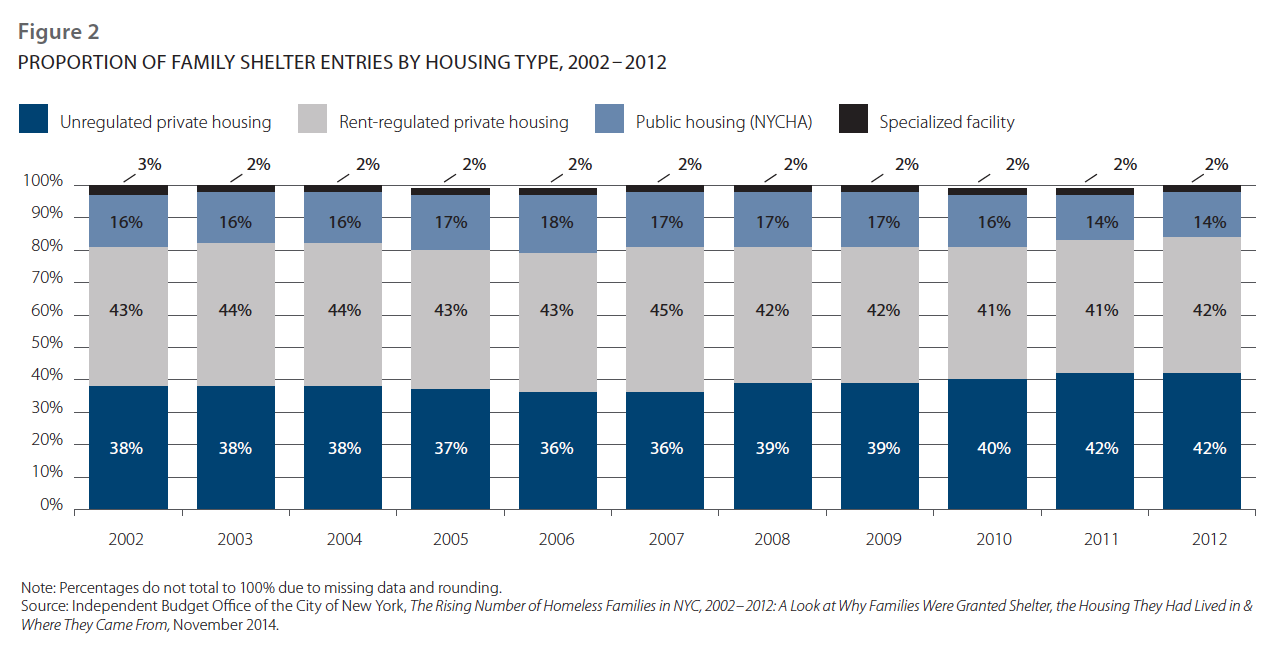
The peak in shelter entry from NYCHA took place in 2010, when more than 1,700 families entered shelter (Figure 3). By 2012, the number dropped down to 983, mirroring a pattern seen across the city among entrants from all housing types. While the number of families entering shelter from NYCHA in 2012 was far from the highest of the ten-year period, it is consistent with an overall pattern of growth representing an increase of 46% from the number of families who entered in 2002.
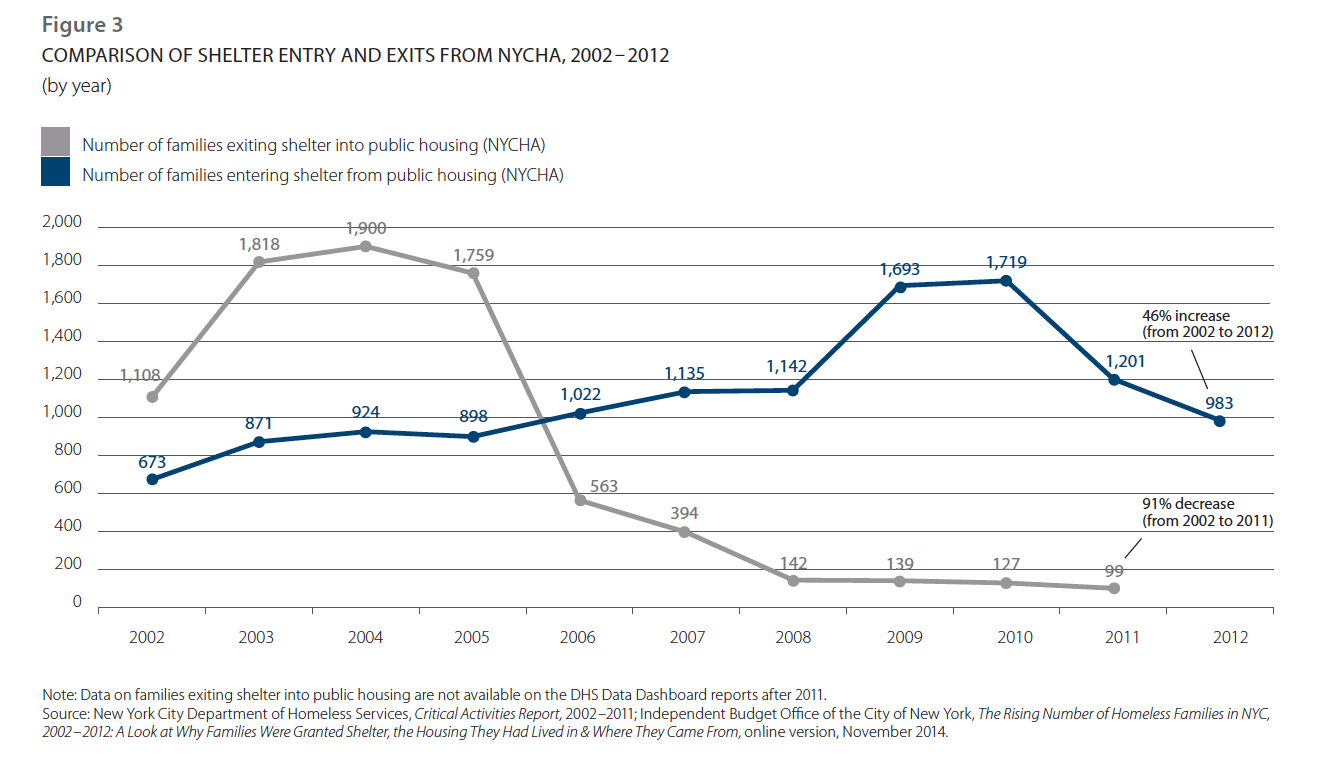
During the same period of time, family shelter exits to NYCHA housing declined by 91% with a peak in 2004 of 1,900 families and a low of 99 families in 2011 (Figure 3). This steep drop in shelter exits from 2005 through 2011 was the result of the Bloomberg administration’s decision to end priority placements of homeless families into NYCHA.
In 2014, the de Blasio administration reinstated priority placements for homeless families, but in a more limited manner. Eight hundred and sixty-five public housing units were filled by homeless families in 2014, and an additional 750 units per year are planned for the next two years. Housing advocates have hailed this policy as an important first step in ending New York City’s family homelessness crisis. It is of note, however, that on average 1,115 families entered shelter annually from 2002–2012. For over ten years, more than 750 families have entered the shelter system from NYCHA and since 2006, NYCHA has added to the number of families in shelter (Figure 4).1
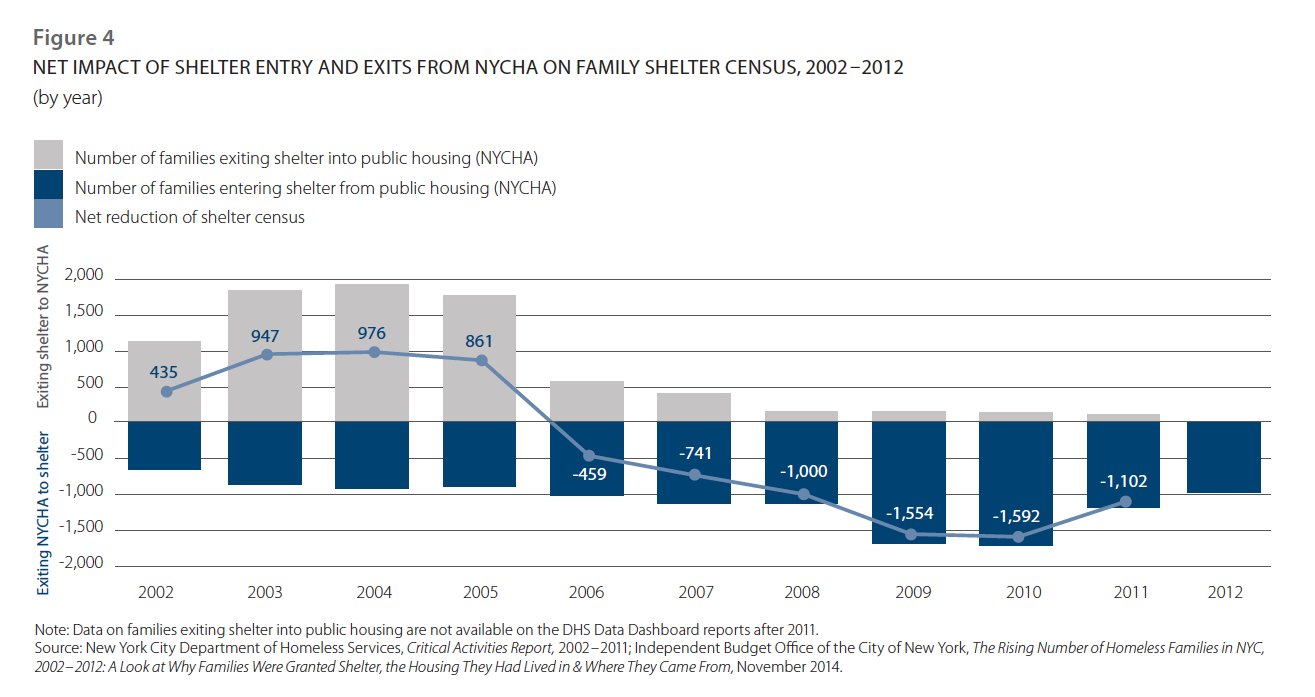
What Is Driving Shelter Entry from NYCHA?
Affordability is not the only risk. There are many factors that place families at greater risk for entering the shelter system. Common among these are domestic violence, the impact of extreme poverty, unemployment, and unstable living arrangements. A closer look at statistics and NYCHA housing regulations highlights all of these vulnerabilities. While an average rent of $435 per month makes NYCHA apartments some of the last truly affordable housing for the city’s lowest income families, over half (53%) of families had no household member employed (Table 1). Even with affordable rent, these families’ struggles with poverty place them at risk of losing their housing and entering shelter. Adding to high unemployment, rules which govern occupancy within NYCHA are enforced more strictly than in the private housing market.2
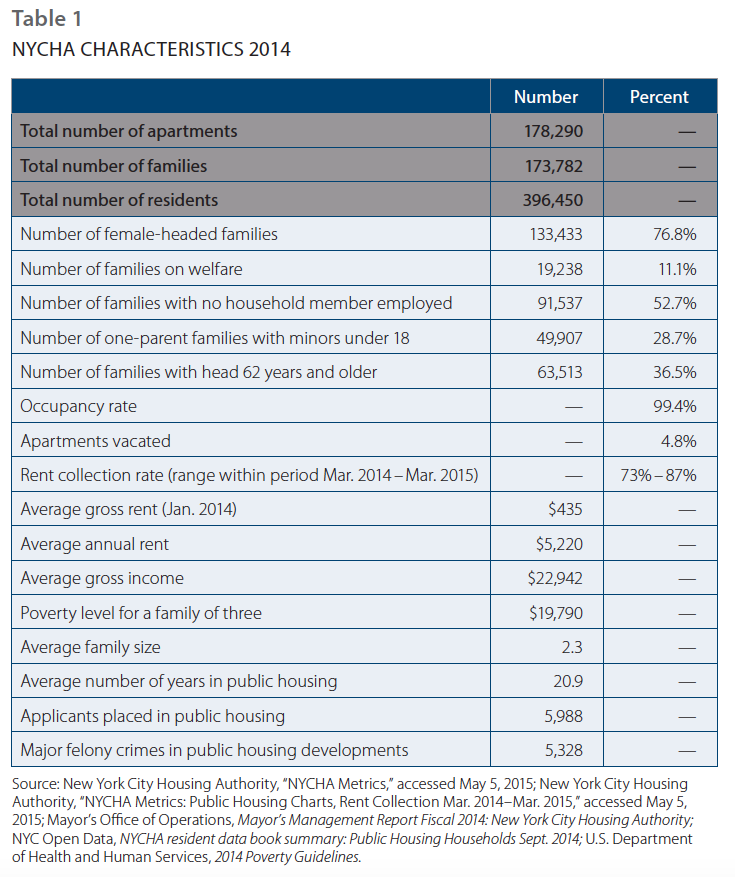
These vulnerabilities are reflected in the eligibility determinations of shelter entrants who reported NYCHA housing as their last address. The most frequent reason families from NYCHA were found eligible for shelter was overcrowding at 28%, an indicator that is closely correlated with families doubling up. The second leading cause at 26% was domestic violence, with an additional 12% due to discord. While eviction, at 17%, was roughly half as high as it was for forms of private housing, it was still the third leading cause of entry into shelter from a NYCHA address. The lower rate of eviction in public housing highlights the important role that NYCHA plays providing affordable housing in New York City. However, that families continue to enter the shelter system from NYCHA points to the fact that housing affordability alone cannot end the city’s family homelessness crisis (Figure 5).
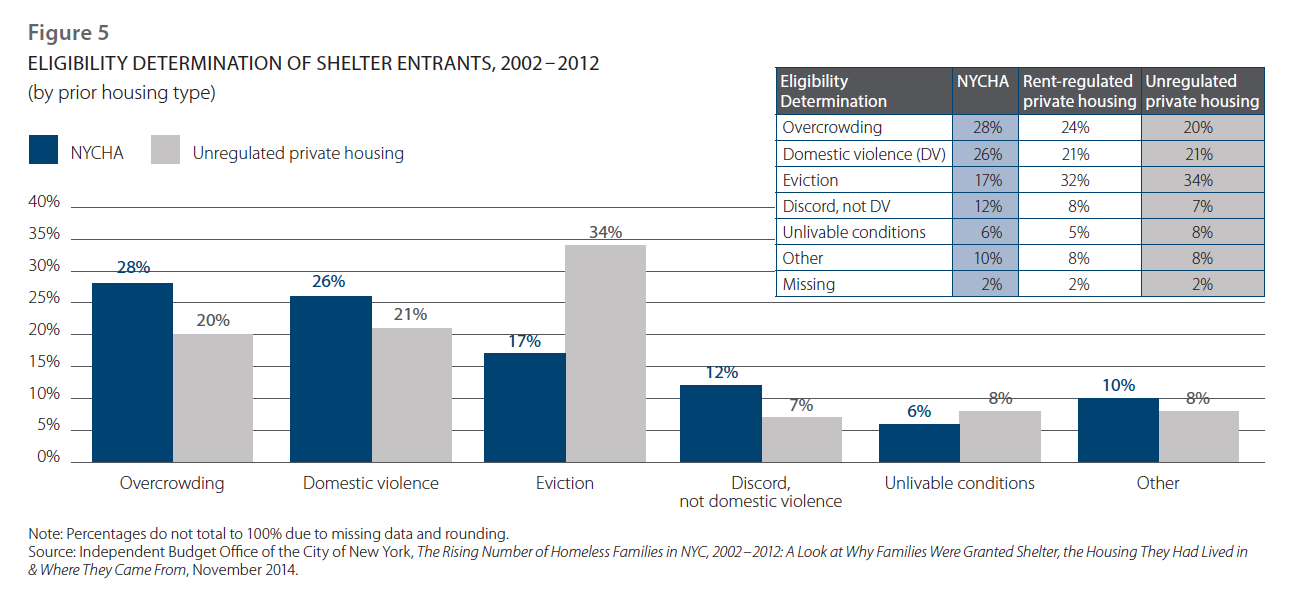
Meeting Expectations and Creating Family Stability
NYCHA’s status as both a chronic feeder to the family shelter system and one of the city’s last sources of affordable housing for low-income residents raises important questions for New York City and the policies it implements to address family homelessness. Key among these is how the city identifies homeless families who will be placed into NYCHA apartments. With over 12,000 families in shelter, selecting those who are the most likely to remain stably housed, and for whom affordable housing is truly the predominant underlying cause of their homelessness, is critical in targeting this scarce resource. Additionally, examining housing authority priorities and procedures to see how they may be driving family shelter entry from public housing is essential. Public housing is an important piece of turning around New York City’s family homelessness crisis, but before it can effectively fulfill its true potential, the city must consider how it chooses to use its affordable housing stock and change policies that place families at risk for entering the shelter system.3